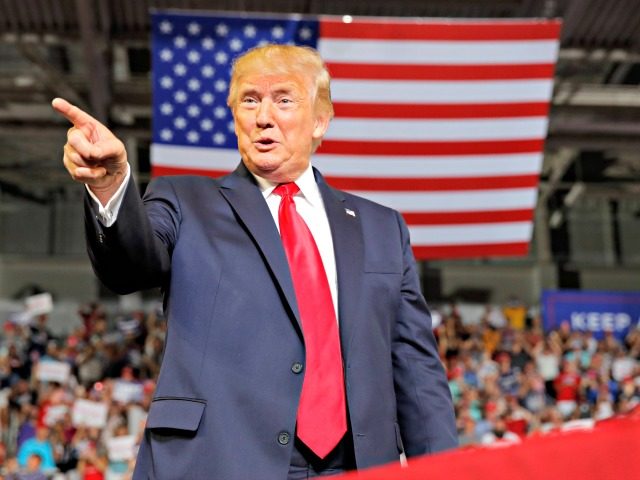President Donald Trump pushed his calls for lower interest rates further Wednesday, indicating that the Federal Reserve should perhaps aim for negative interest rates.
The president said the Fed should get U.S. government interest rates “down to ZERO, or less,” arguing that the U.S. should “always be paying the lowest rate.”
….The USA should always be paying the the lowest rate. No Inflation! It is only the naïveté of Jay Powell and the Federal Reserve that doesn’t allow us to do what other countries are already doing. A once in a lifetime opportunity that we are missing because of “Boneheads.”
— Donald J. Trump (@realDonaldTrump) September 11, 2019
The Fed targets the overnight interest rate banks pay to borrow reserves from each other. But expectations for the Fed’s target control longer-term yields on bonds issued by the U.S. government. Lower rates make it cheaper for the government to borrow, lowering deficits by lowering required interest rate payments.
Around $17 trillion in global bonds now have negative yields, meaning investors who hold them to maturity will lose money on the bonds. But if yields fall even further, the price of those bonds could go up, rewarding investors for having bought them despite the negative rate.
U.S. bonds remain solidly in positive territory and the yield curve is no longer inverted, meaning long-term bonds once again have higher yields than short-term bonds. Jim Bianco, who heads Bianco Research, recently tweeted that U.S. bond yields are the highest in the developed world for the first time since 1958.
The bottom panel shows the % of countries whose policy rates are below that of the United States.
For the first time since 1982, the U.S. policy rate is the highest in the dev world. This tends to be a decent signal of an impending recession, much like the yield curve. pic.twitter.com/cSrDLSBfhO
— Jim Bianco (@biancoresearch) September 10, 2019
As President Trump correctly points out, interest rates on Treasuries are a major factor in future borrowing costs. Those, in turn, have a big influence on the size of future budget deficits. Lower interest rates can mean major savings for the U.S. government by lowering the amount the government must spend to support its debt. The Congressional Budget Office recently revised down its estimate of future interest rates by a small amount but said this would save $1.4 trillion in interest payments over the next ten years.
This is what I respect about Trump, he’s the rare pol who recognizes that not only are interest rates a policy choice but so are net interest costs. There are trillions of dollar at stake. Depending on which party acts, $ will go to Medicare or to tax cuts https://t.co/cIkDk0NXep
— Carlos Mucha (@mucha_carlos) September 11, 2019
Trump called Fed officials “boneheads” for keeping rates too high.
Fed officials meet next week to assess the economy and set their interest rate target. They are widely expected to reduce the target by one-quarter of a percentage point, often called a 25 basis point cut. Some investors think they could cut by as much as a half a percent point.
Top Fed officials typically “go dark” in the week before the monetary policy meetings, avoiding making public speeches or comments. President Trump has in recent months taken to criticizing the Fed during this so-called ‘blackout’ period.

COMMENTS
Please let us know if you're having issues with commenting.